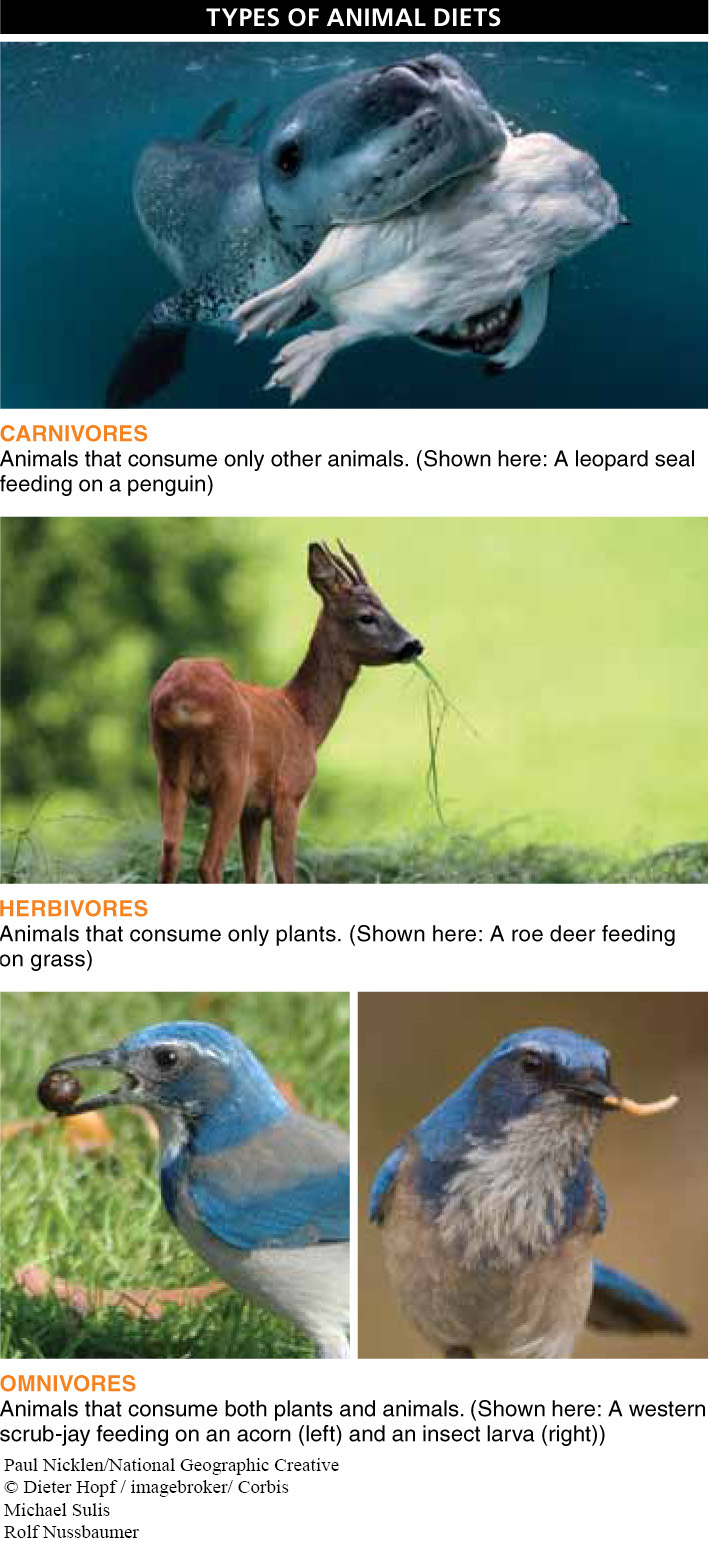22.2: What’s on the menu? Animals have a variety of diets.

All organisms need food—
In the animal world, species fall into three groups based on their diets (FIGURE 22-2).
Carnivores Predatory animals that consume only other animals are carnivores. They include spiders and snakes; mammalian species such as wolves, seals, bats, and cats; and hawks, owls, and other birds of prey. Some carnivores don’t actually kill their prey but instead just suck nutrient-
Herbivores Food: easy to get, but hard to digest. That sums up life as a herbivore, an organism that consumes only plants. Because plants are plentiful in most habitats and can’t run away, they are easy targets for predation. To protect themselves, however, plants tend to carry many toxic compounds that are difficult or impossible for animals to break down chemically. Nonetheless, many herbivores have developed digestive adaptations to overcome these difficulties. We’ll explore a couple of them in detail in Section 22-
876
Omnivores Most humans, as omnivores, eat plants and animals and can digest both efficiently. We share this diet with numerous other species, including cockroaches. Omnivores come in all sizes, from bears to raccoons, from chickens to flies and wasps.
TAKE-HOME MESSAGE 22.2
All animals require food. Plants and other photosynthetic organisms produce food through photosynthesis, and animals have one of three types of diet. Carnivores consume only other animals. Herbivores consume only plants. And omnivores, including most humans, consume both plants and animals.
Omnivores and herbivores are similar in that they both consume plants; however, omnivores also consume other animals, which herbivores do not. How are omnivores and carnivores alike? How are they different?